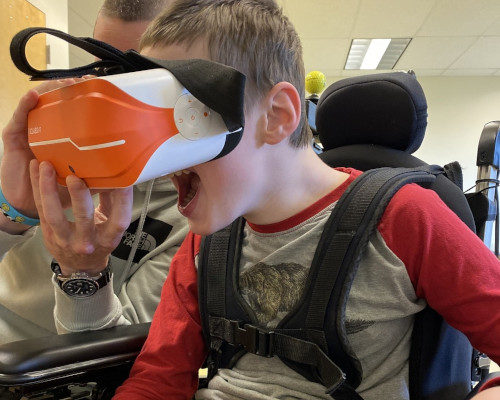
In early 2021, Spaulding Academy & Family Services applied for and received a technology grant from the Flutie Foundation for the purchase of virtual reality (VR) headsets.
We are a small, nonprofit special education school serving students with a wide range of abilities, including many who are on the Autism Spectrum and/or have limited mobility, and it was very important to us from the onset that we use this technology to meet the needs of all our students.
Selecting a VR solution
When choosing which devices to purchase, it was important to us that we have the ability to create and upload custom content. Spaulding focuses on the unique needs of each student, and we strive to meet those needs in creative, innovative, and fun ways. In this case, as in most others, that meant creating customized learning structures.
We chose ClassVR headsets because their platform allows for an efficient workflow when creating custom content – 360-degree video is quick and easy to upload, and integrations with CoSpaces and Thinglink allow us to think beyond just the physical world. The headsets themselves are also pre-loadable, so we’re able to customize each headset to the needs of a specific classroom or service provider.
To create our content, we purchased an Insta360 ONE X2 camera with selfie stick, tripod stand, and head mount. We also purchased CoSpacesEdu at the onset of the project in order to expand our world of possibilities – we will be implementing Thinglink as well!
Experiment, brainstorm, and problem solve with VR in special education
1. Our implementation team consists of Charley Suter, Spaulding’s Digital Learning Specialist, and Jen Benjamin, Occupational Therapist. After reviewing existing research and extensively discussing the still-untapped applications of this technology, and then experimenting with the devices themselves, we were able to narrow our scope of VR usage to several areas. Our main ideas centered around physiological and sensory regulation, emotional regulation, skill-building, social interaction, and transitions (new places or experiences) – all of which tend to present significant challenges for our students.

